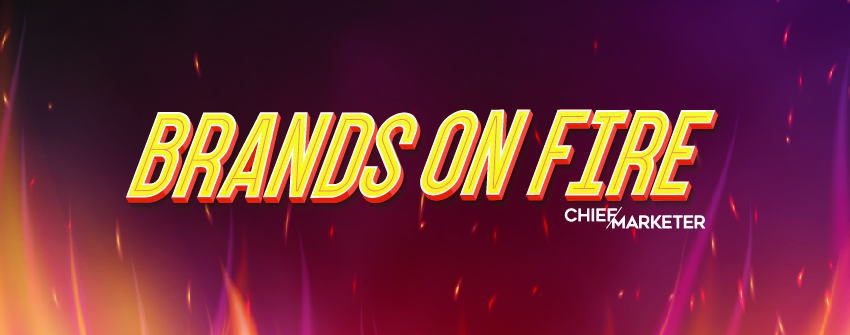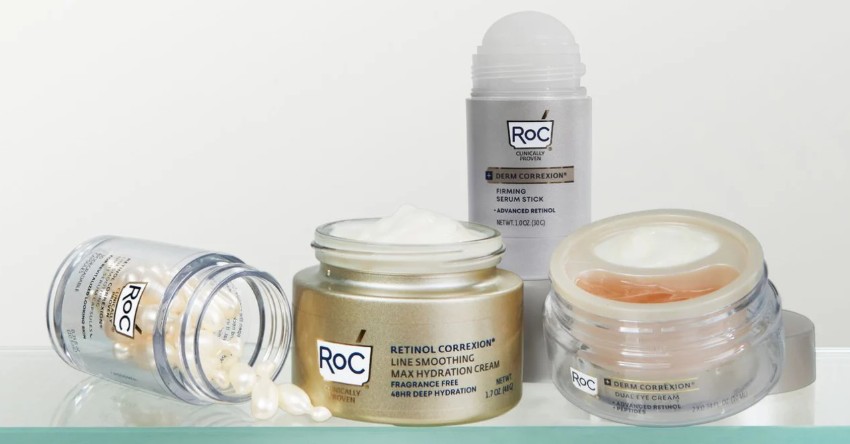
Nespresso’s premium coffee and machines hail from Europe, where coffee’s reference point and primary consumption method is a short shot of espresso. But according to the brand’s trend research, Gen Z consumers in the U.S. experience coffee differently than its core customer does. This generation is accustomed to cafes on every corner and beverages that are often served iced, flavored and consumed out-of-home.
That presented a marketing challenge for the brand. “From a coffee landscape standpoint, we saw that their definition of coffee has changed—and is changing,” says Jessica Padula, VP of Marketing at Nespresso NA. “We look at that and say, okay, we have to meet them where they are, and not necessarily try to convince them to drink coffee the ‘Nespresso way.’”
Enter the brand’s new machine product, the Vertuo Pop, a smaller, colorful Nespresso maker sold at a lower price point. We spoke with Padula about the brand’s approach to Gen Z targeting; how it balances marketing to multiple generations; new messaging surrounding its sustainability efforts; and an affiliate influencer marketing strategy in the works.
Chief Marketer: What strategies are you using to market your products to Gen Z? How is the approach different?
Jessica Padula, VP of Marketing at Nespresso NA: To start with, Gen Z is fundamentally different in many ways, as every new generation is. But from a coffee landscape standpoint, we saw [that] their definition of coffee has changed—and is changing. Their introduction to coffee has come in a world where there’s a coffee shop literally on every corner. So, their first interaction with coffee is usually out-of-home, and it’s overwhelmingly cold and flavored. The generation before was often in their home, [with a] big pot of coffee. That was the traditional method.
First and foremost, that presents an opportunity, but also a challenge for a brand like ours, that comes from Europe, where the coffee reference point is a short shot of espresso. That’s the coffee drinking habit or primary consumption method. We look at that and say, okay, we have to meet them where they are, and not necessarily try to convince them to drink coffee the Nespresso way.
CM: Gen Z isn’t your typical, core customer. Why did it make sense to market to the group now?
JP: For a couple of years, we put Gen Z on the back burner and said we don’t really have the right product from a machine or a coffee offering standpoint. Plus, at that time, Gen Z was still not getting their first apartments and buying their first appliances. Now, they’re right at that cusp. When we think about marketing to them, we try to think consumer-first, not just brand-first. How do we make sure we offer something that’s an entry-level price point that’s [compatible with] a typical Gen Z lifestyle, including city-dwelling, smaller environments?
Then from a pure coffee standpoint, how do we make sure we offer cold coffee that works with milk and with flavors? Now we have that suite of products. 2023 was the first year we had the right product offering. Now, how do we go reach them? With the products in particular, it starts with machine acquisition. And that’s the Vertuo Pop machine. It’s super bright and colorful. It’s our smallest footprint. And it’s perfectly primed for Gen Z, for all the reasons that I mentioned.
View this post on Instagram
CM: What marketing approach have you used to reach them?
JP: There’s a couple ways we’ve done it, but one I’ll highlight: We wanted to go where they are, and create something fun and experiential. That’s the other thing we know about Gen Z: Especially in a post-Covid world, we’re all sick of the virtual experiences. But Gen Z in particular wants to feel a part of something and get back into experiences and engaging with brands and other people in real life.
Over the summer, we took over the Ferris wheel at Santa Monica Pier and converted some of the gondolas on the Ferris wheel into mini iced coffee cafes. It was about taking the Vertuo Pop machine and putting it in an unexpected environment, where it’s all about having fun and a surprise and delight, to showcase how small it is, but also deliver an amazing cup of iced coffee in an hot, outdoor environment. That’s just one example, but it’s led by all of those insights about who they are, what their coffee drinking habits look like, and how we can best meet those needs.
CM: Given these new marketing tactics, how do you ensure you aren’t alienating other generations or audiences?
JP: This question continues to pop up, both internally and externally. The existing espresso consumer is certainly not Gen Z. So, how do you make sure it’s not off-putting to them? It’s a concern for us, but it’s something we protect against by thinking about separating our audiences of acquisition and retention or loyalty. [Our] acquisition focus is more in that brand-building space.
Our newest commercial with George Clooney is a perfect example of how you marry the two strategies. He is a longtime brand ambassador, so he’s known by our audience as the Nespresso person. Many Gen Zs may know who he is, but not all of the history and the love the older consumer has for him. So, we paired him in our most recent advertising with younger audience love, streaming starlets Julia Garner and Simone Ashley. It’s a fun, playful spot that marries our existing style of Nespresso communication. It’s a tough needle to thread, but you can bring those two together.
On the retention side, that’s where we have a healthy CRM program where we’re constantly in touch with our consumers, whether it be through SMS, email, direct mail or even our social media platforms. It’s about saying, now that you’re in the Nespresso world, we can continue to sell you a variety of different experiences here.
CM: How is Nespresso communicating its sustainability practices to consumers?
JP: Who we are as a purpose-driven brand, and things like our sustainability efforts, are core to our DNA. They become front and center once you’re bought into the Nespresso ecosystem. Those have global relevance—and I don’t mean geographic, but demographic relevance. Age groups of all shapes and sizes are going to appreciate that we’re thinking about sustainability and trying to reduce waste, that we’re approaching our value chain and our supply chain with care and concern for human beings. That we’re thinking about coffee beyond just the drink that they consume, but actually as a force for good in the world. That’s where the two different audiences require two different approaches.
CM: How does that play out from a marketing perspective?
JP: Sustainability has been 100 percent embedded in our DNA from the beginning of Nespresso. Trying to approach everything we do with a sustainability mindset has not changed. What has shifted: Since 2020, many brands have recognized what I would call the third piece of sustainability. If you think of sustainability as E, S and G, we’ve long done the E and the G. We’ve done the S, but we haven’t necessarily fully developed it. Our actions have not changed, but what has changed is how we communicate and how we specifically make the S—but also a little bit of the E story—more relevant for U.S. consumers.
CM: Can you provide an example?
JP: We long communicated our sustainability efforts by trying to highlight the countries of origin where we grow our coffees. We work with an amazing cohort of coffee growers and agronomists in Ethiopia. That’s a beautiful story about women empowerment, because in those countries, they may not have as much economic opportunity and the coffee industry allows them, through Nespresso’s support, to grow in that. We long tried to take those stories and make them relevant here in the U.S. I’m going to be honest: In many cases, they didn’t make people want to buy Nespresso anymore, unfortunately. So, we’re not going to stop supporting those communities. But what do we do differently? Since 2020, we have done a parallel activation in the U.S. that showcases the same values and the same core, but hits a little closer to home in terms of U.S. communities.
A good example: Gender equality is an issue in many countries around the world where we grow coffee. And gender equality and broader equality is a huge concern to U.S. consumers, especially younger consumers. A couple of years ago created a partnership with the Ali Forney Center, which is the largest homeless center for LGBTQ Youth. It’s based in New York City, so it’s in our backyard where our corporate offices. They are someone we’ve engaged with from a volunteering standpoint with our employees, but we wanted to support that charity, make it meaningful and connect it back to the coffee , so that by drinking espresso, you’re also supporting these causes. We created this beautiful, artist-designed cup to raise awareness, support and fundraising for the center. What does it have to do with coffee? It references the values and the core of how we operate as an organization, even throughout our entire value chain, including our countries of origin.
CM: How are you approaching influencer marketing with Gen Z? Any other platforms besides TikTok?
JP: We still have a lot to learn. We’re really focused on TikTok because we think of that as the Instagram of the next generation in many ways. Influencer marketing is a sweet spot for me. I grew up in marketing in the social media space. So that’s something that we’re really working on continuing to develop. As an anecdote, when I started at Nespresso seven years ago, we had no headcount dedicated to influencer marketing and no budget dedicated to it. Fast forward a couple years later, and we have two headcount dedicated to it and a healthy budget that we consider part of our working media, because we look at it as a distribution vehicle. [It’s a ] huge shift internally.
@noahbeck does ur coffee come w a view?🎡 had a great time w @Nespresso taking over the Santa Monica Pier to celebrate their #NespressoVertuoPop machine at the #NespressoVertuoPopCafe #NespressoPartner ♬ Summer day – TimTaj
With the gondola takeover over the summer with Pop Cafe, a huge part of the way you get that word out there is by inviting influencers, friends of the brand, and also paid influencers to come and experience that with us. For that activation, we worked with Noah Beck, of TikTok fame. From an influencer standpoint, it’s finding the right people. We’re continuing to double down on that, and then developing a continued focus on it in a way where you have a cohort of influencers who love the brand and engage with us regularly. It’s less about platform. Platforms continue to develop over time, but to me it’s more about the people and that connection, and feeling like it’s not just a one-to-one momentary transaction, that it’s this thoughtfulness of who drinks coffee, who has a relevant way to talk to their audience. And then they become partners of ours, but also further distribution channels, wherever they then go and develop followings [on] whatever platform comes up.
CM: So who you choose to work with and that relationship drives the strategy. Not too long ago, influencers might promote a product by just posting #ad.
JP: One area we’re testing in Q4 is the affiliate influencer marketing space. We’re piloting it. We’re genuinely a little bit behind, and we want to get ahead of it. We’re taking existing promotional periods that we have and saying, what if we extended this to a few of our friends of the brand? But that can be a slippery slope. It can turn into exactly what you just described—just a bunch of influencers posting your promo code. Do they really use the product? Do they normally talk about coffee? Is it a part of their lifestyle? It would feel very inauthentic to just blast out promo codes to anybody and everybody. We’re really thoughtful. Even now at my level, I still get involved with who’s showing up to events with us and who is going to show up on our channels. That matters, because what they say and do in their other channels, given the heated world in which we live, can also reflect back on you as a brand. It’s really important who you work with, from an authenticity standpoint but also from a risk management standpoint.




 Network
Network

